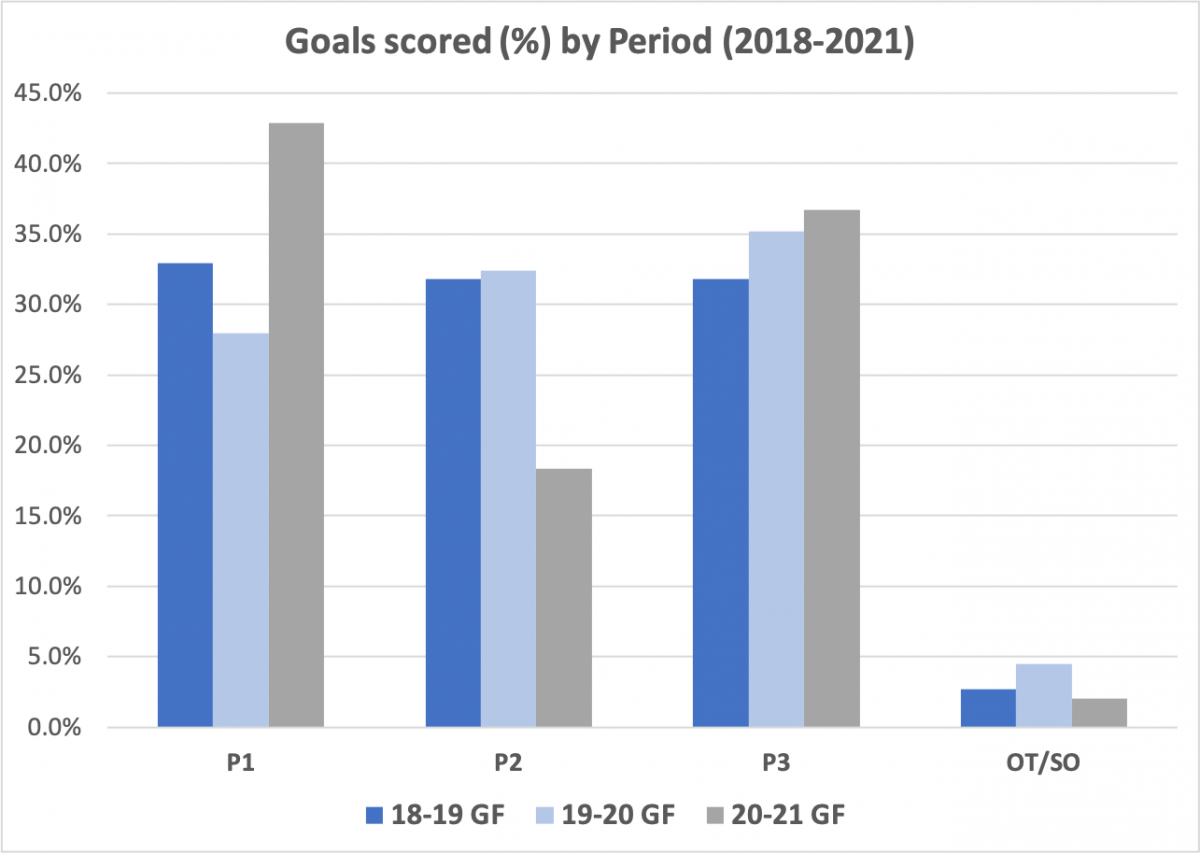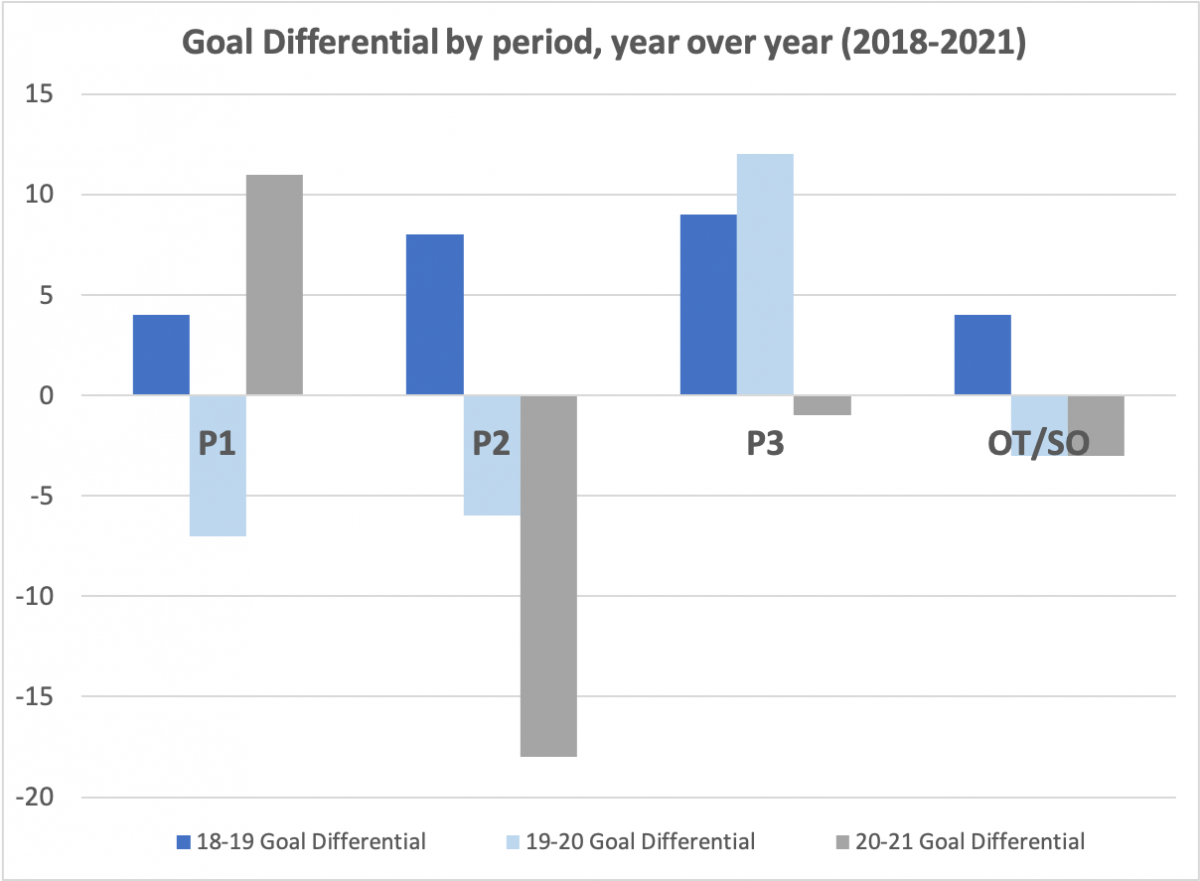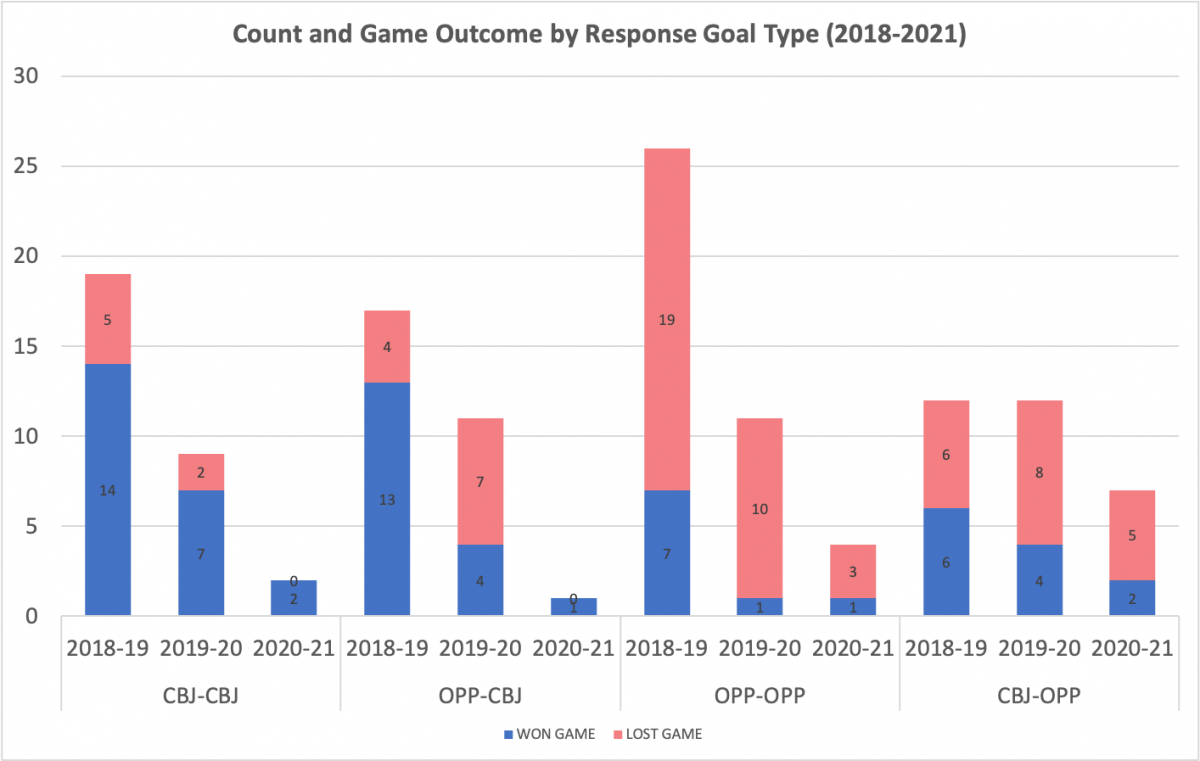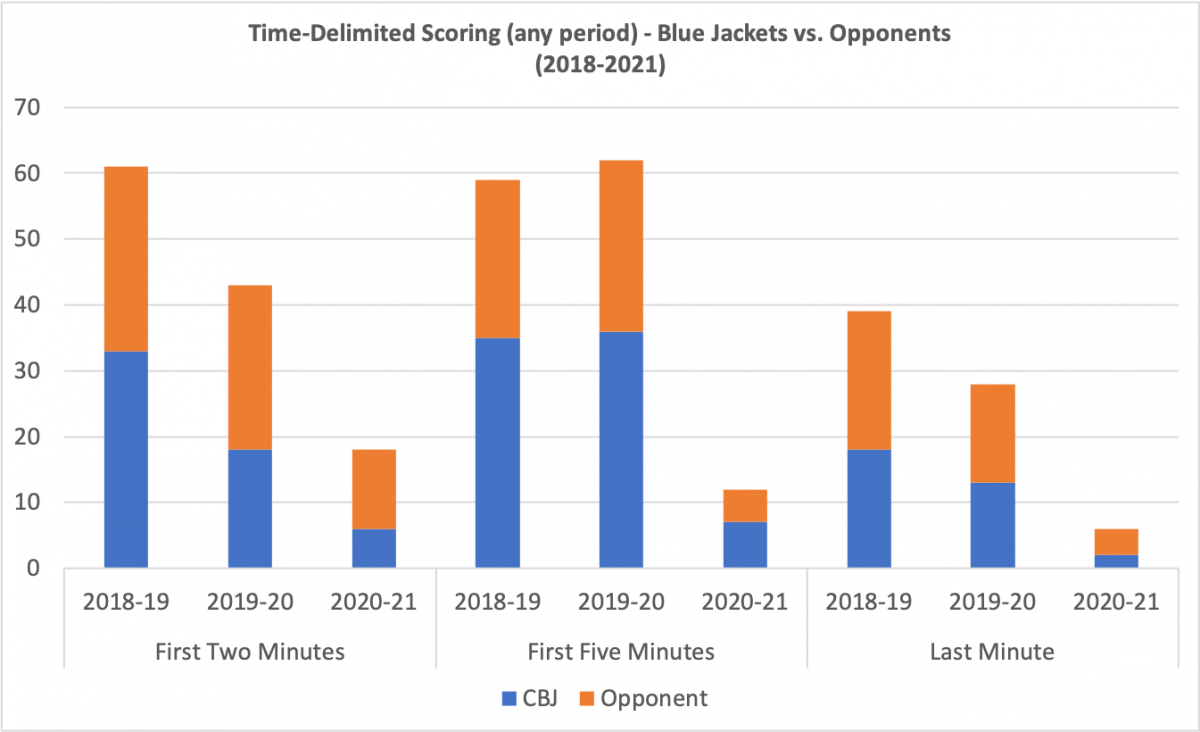Numbers are a funny thing.
I get a lot of questions like “do you know the number of times…” and while maybe I do, often, I don’t focus on those pieces of information because – while maybe interesting – those numbers aren’t relevant.
Some stats are descriptive, meaning that they describe what’s happening but they aren’t predictive meaning there’s no mathematical relationship telling us that X happening has anything to do with a team winning or losing.
(I’m sorry to tell you that the jersey a team is wearing doesn’t impact their ability to win a game.)
You know what else is a funny thing? Momentum. It’s one of those things that everyone has felt at least once whether they were participating in or watching sport, but as of right now it’s impossible to quantify.
What do we do when we know we should focus on numbers that are meaningful, but we don’t have any for a certain thing we want to measure? Well, we can try different theories; we can apply mathematical rigor, and/or we can look at proxies (things that maybe relate to momentum to see if there are the beginnings of anything).
Which brings us to Monday’s game between the Blue Jackets and the Carolina Hurricanes. The Hurricanes had two instances where they scored back-to-back goals in rapid sequence. Two came 45 seconds apart in the second period, two came in the third 32 seconds apart.
And people started asking how often that happens “BeCaUsE iT FeEls LiKe iT hApPeNs AlL tHe TiMe.”
So, is this possibly a thing? Let’s dig in.
THIS IS A HUGE CAVEAT: EVERYTHING I’M ABOUT TO DISCUSS HAS NO PROVEN RELATIONSHIP (YET) TO WHETHER A TEAM WINS OR LOSES.
I wrote about momentum and the Blue Jackets a few years ago and I’m going to use the same definitions as I did before to look at “momentum” and the Blue Jackets. Let's revisit those ideas.
First question. Do the Jackets seem to struggle in one period more than any other?
Well, this year they do. We can’t look at goal totals because as a total joy, the three most recent seasons will all be a different number of games, and obviously, this season is not even 20 games in. What percentage of the Blue Jackets’ goals come in each period of play?

We see that unlike the previous two seasons where scoring was more or less consistent period to period, most of the Jackets’ goals are coming in period 1. Now, of course, there’s time for this to level out this year – it’s just where we are right now.
But, it’s not just goal scoring that’s an issue in the second. It’s also goals against. The Blue Jackets are allowing a whopping 45% of all their opponents’ goals in the second period, meaning, that the goal differential year over year looks like this.

This year’s Blue Jackets seem to start strong but falter in the second, and can’t muster a strong enough return to form in the third.
Second question. What about “response goals?”
A “response goal” is a goal scored within two minutes of another and they can feel great (your team scores two quick strikes) or like momentum killers (yay! Your team scored – and then the opponent goes right down the ice and scores). More on response goals HERE.
Are they a real thing impacting Columbus?
First, to remind you these things aren’t statistically valid: in each of the last three seasons, response goals have accounted for no more than 15% of all goals scored in Blue Jackets games so our sample size is insanely too small. That being said, here you go.

The outcome isn’t really amazing any which way, and feels like what you’d expect. If your opponent is scoring two quick-strike goals on you, you’re probably not winning that game. If you are the team scoring two quick strikes, you’re probably winning. But it's worth noting how incredibly high the total count of opponent-opponent response goals was two seasons ago. The team has really seemed to find a way to counter that behavior since, even if you account for games played.
Third Question. Does scoring quickly out of the gate help?
This was something Nick Foligno posed in our original discussion in 2018. Get on the board early and that helps momentum.
Here’s a look at how many goals the Blue Jackets and their opponents have scored in the first two minutes of any period, the first five minutes of any period, and the final minute of any period (a perceived momentum-killer to the opponent).

There’s no real difference here in terms of which team is scoring when, but what is different it the conversion to actual wins. In 2018-19 and 2019-20, if the Jackets scored a goal in any of these timeframes, they won the game at least 61% of the time – last season that was as high as 70% for first goal in two or five minutes! – but this season, the Jackets have yet to win a game in which they’ve scored in the first two minutes and are hanging around a 50% win rate for either of the other two time-delimited categories.
What does it all mean?
Here’s the thing. For right now, this is mainly trivia...and the inflection of fan angst, unfortunately. More rigor investigating this across enough teams and seasons to see if there was any statistical relevance might be something for another time. There could also be value in sorting through just 5-on-5 situations, the impact of special teams, etc.; but for right now, we continue to seek ways to quantify “momentum."
And while there are certainly things to fix within the Blue Jackets' game right now, I advise we all don’t hang our hats on any of these fun facts as predictors of what comes next. Yet.
